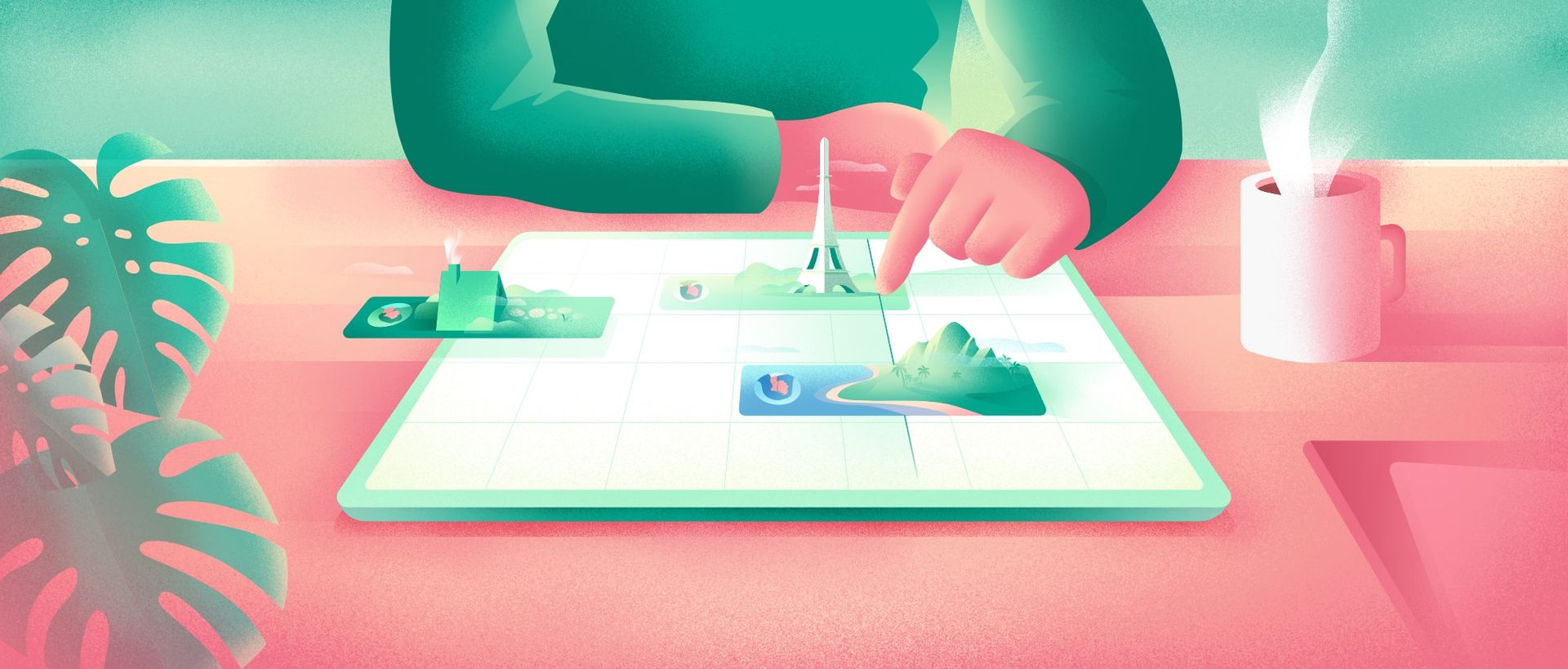Managing employee leave can be a challenge for many managers. And for good reason—operations must go on, in spite of reduced staff.
Time off is essential for well-being and productivity. Managers must find a way to enable their employees to take well-deserved vacations.
The only way to do this without going crazy is to be well organized and to plan, plan, plan. To this end, here are our best tips to help better manage your employees’ leave.
Set Basic Rules for Employee Time-Off Requests
Certain periods of the year are more coveted for time off. Of course, summertime and the holidays are classics. Organizations must lay down some basic rules in order to keep operations going smoothly during these times.
Leave Requests
The first thing to clarify with your employees is how they can request time off. Establish a clear and simple system to ensure that you keep track of their requests and follow up on them.
Most employee scheduling software also allows you to manage leave requests. Your employees submit their requests directly into the software, and you can easily approve or reject them. You can even leave them a note to explain your decision.
Don’t forget to specify the deadline for leave requests, to avoid last-minute requests. For example, ask your employees to apply with at least 2 weeks’ notice. That way, you’ll have plenty of time to see if someone else can replace the employee during their absence.
Managing Employee Leave
Explain to your employees what criteria must be met for their leave requests to be accepted. For example, leave of a personal nature or leave in connection with the death of a loved one will not be granted in the same way as requests for annual vacation.
When it comes to annual vacations, establish a clear procedure so that your employees know what to expect. You may decide to approve requests according to employee seniority, on a first-come, first-served basis, according to individual preferences, and so on.
The important thing is to encourage employees to discuss the matter among themselves, to avoid everyone wanting to take time off at the same time.
Restricted Periods
Since vacations often coincide with the busiest periods of the year, some companies limit the number of employees who can go on vacation at the same time. In this way, they ensure that they can continue to offer quality service.
As an employer, you can also designate certain periods of the year when all vacation requests will be refused due to excessive workload. You can also establish certain restrictions. For example, your employees can request time off for Christmas or New Year’s Day, but not both.
Leave Duration
Some organizations also set a maximum number of consecutive weeks of vacation to allow all team members to rest.
Let’s face it, it would be unfair for one employee to take a month’s vacation in the middle of summer, while their colleague, with less seniority, can’t take more than a week because they have to make up for the absences of others.
Unpaid Leave
Unpaid vacations cost companies nothing, and can contribute greatly to the well-being of your employees. So if your employees want to take more vacation time at their own expense, why not let them!
Unpaid leave is often granted on a case-by-case basis. However, it’s good practice to mention this possibility to your employees in your leave-taking policy.
Pro Tips
💡 Our best advice: forget about overly restrictive rules. Remember, for an employer-employee relationship to last, it has to be win-win. If your employees are still unhappy about not being able to take vacations when they want, they’ll go and find a job that allows them to.
Once the ground rules have been established, it will be easier to manage the various requests for time off.
Flexibility and Understanding
There are no universal rules; every company has its own particularities. Adopt a vacation policy that reflects your image, and adjust it as necessary.
However, two things should come first: flexibility and understanding. For example, some people need to take their vacations at certain times in order to spend them with their families. It would be deplorable to deprive them of quality time with their loved ones because of overly strict rules.
Finally, don’t forget that students are entitled to weeks of vacation too. They work hard all year round and deserve a break.
Don’t Wait Till the Last Minute
To coordinate everyone’s vacation, ask your employees to let you know as soon as possible when they would like to take days off. Keep track of each request and any changes.
This way, you will be able to make sure everything lines up, and have time to find solutions or propose other options if need be. Your employees will also be able to plan their vacation days without being at the last minute.
For smaller teams, it is also possible to be more flexible toward employees who wish to take a vacation with only a few days’ notice.
Keep an Eye on Vacation Time Banks
To make vacation management easy, you need to be able to keep track of your employees’ vacation banks. Make sure you have a tool to keep track of the number of vacation days available to each member of your team.
This way, you can be sure that your employees are taking time off to rest, or that they aren’t depleting their bank too quickly.
There are several types of leave to consider:
- Paid leave;
- Unpaid leave;
- Sick leave;
- Parental leave;
- Absences for marriage, birth or a loved one’s death;
- Compensation for overtime.
Make sure your employees themselves have access to details of their vacation days to hold them accountable.
Use the Right Tools
When I worked for a large company with more than 300 employees, leave management was complex, to say the least.
We had to fill out a paper request, which then had to be approved by our supervisor and then manually entered into an HR system by a human resources employee.
One day, in the midst of all these steps, one of my leave requests was incorrectly transcribed. So they had scheduled me even though I was away… and they had actually accepted my request for leave. When I didn’t come in to work, they wondered why. Because they had no way to reach me, it took them two days to understand what had happened, and they had to find several replacements at the last minute.
That was not the best system… and they learned it the hard way.
What Are the Different Leave Management Systems?
Manual Management of Leave Requests
Manual leave management is still widespread in many companies. Employees submit their leave requests by email, text message or even just verbally. The manager takes note of requests and considers them when creating the schedule.
This system often leads to oversights from managers and frustration for employees. Some requests can get lost, and the lack of communication regarding follow-ups often leads to misunderstandings.
Excel Software
For small teams, Excel software can be a solution to plan staff vacations. Employees can make their requests by email, by filling in a paper form, or verbally. The manager records each request in an Excel file for follow-up purposes.
However, Excel does not allow direct communication with the team. Managers must therefore coordinate everyone’s leave requests by email or phone. And since each request has to be entered manually, the risk of errors is greater.
Employee Scheduling Software
Scheduling software is a more efficient way of managing employee leave, as it allows employees to make their own leave requests online. Once approved, these are entered directly into the schedule—or into a vacation tracking tool, depending on the software—helping to avoid unnecessary communication and errors.
Employees also receive a notification when their request is approved or rejected. The manager can even leave them a note to explain the decision.
The scheduling tool is updated to reflect the employee’s new availability. In this way, the manager ensures that no leave requests are forgotten, and that they are respected.
Everything is centralized in one place, reducing errors and facilitating processes. Managers can therefore manage leave requests online at any time.
Vacation Days for All
Although managing leave can be tedious and monotonous, it is necessary for the proper functioning of any business, particularly in the service industry. Using the right methods will greatly facilitate this process.
Finally, always keep in mind that well-rested employees will be more productive employees. Encourage your team members to regularly take time off to completely unplug, and thus avoid burnout.
How to Manage Team Leave?
There are three ways of managing team leave in a company. It can be manual, i.e. the manager takes notes on the various requests and adjusts the schedule accordingly where possible.
It can also be done using Excel, which ensures better tracking of the various requests. However, this method does not automate leave management communications. Follow-up with employees can therefore be more difficult.
Finally, managers can use employee scheduling software to automate the tracking of leave requests. Employees can request time off directly in the software. Managers can approve requests, and employees receive automatic confirmation. Employee availability is then updated directly in the scheduling tool. This system makes it possible to manage leave requests online at any time.
How to Create a Leave Management System?
The steps involved in setting up a leave management system in a company include:
- Assessing your needs and objectives
- Writing a leave request policy
- Determining a budget
- Testing different systems
- Selecting and implementing the new system
What Are the Features of a Leave Management System?
The most common features of a leave management system include:
- Automatic employee availability updates
- Online forms
- Online request management
- Request follow-up notifications
- Notes
- Leave banks
How Can a Leave Management System Help Employees?
A leave management system benefits employees by reducing the number of errors associated with tracking leave requests. It also simplifies the creation of work schedules based on absences.
It can greatly reduce employees’ frustration at forgetting or failing to keep track of their leave requests.










